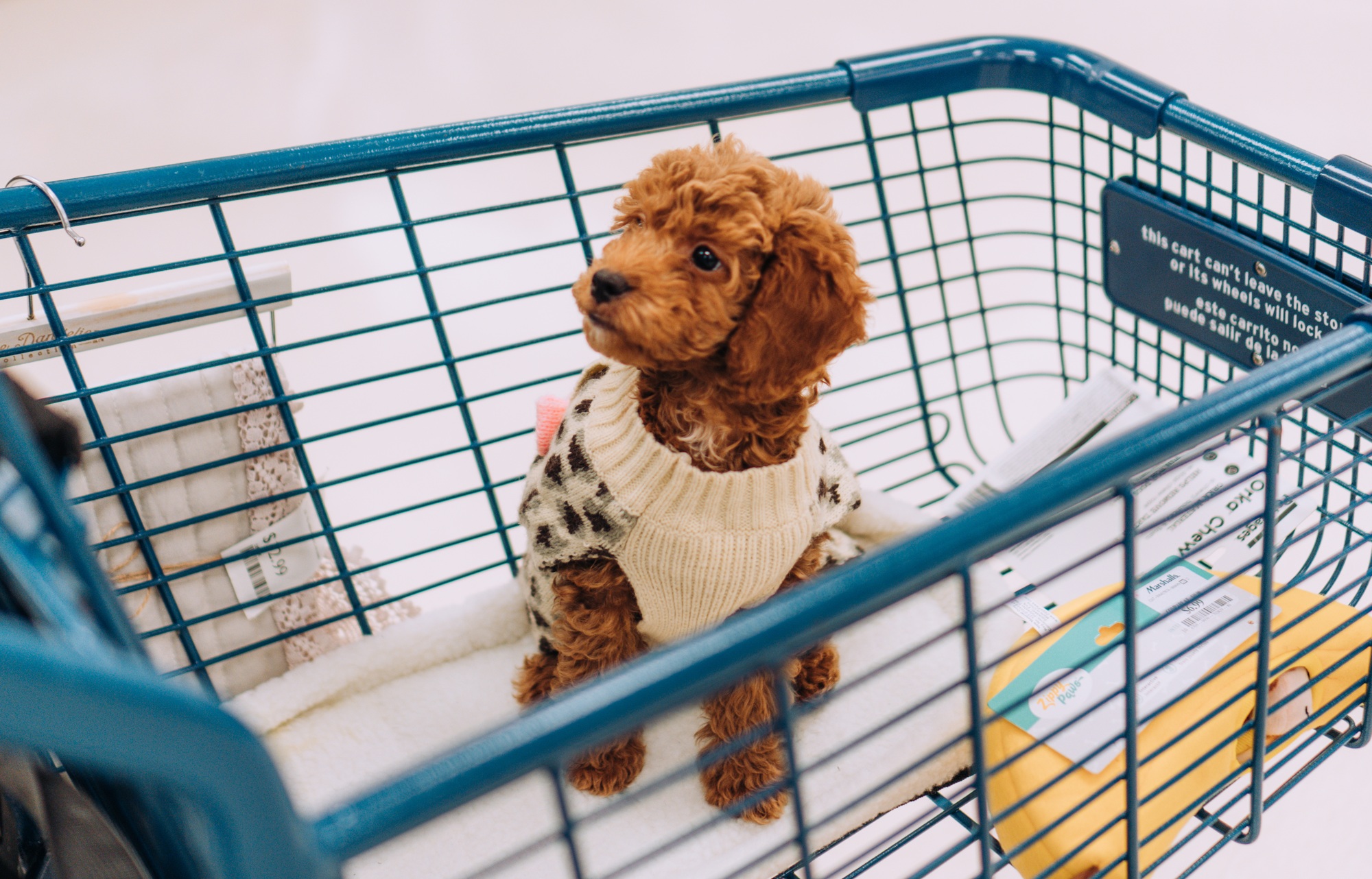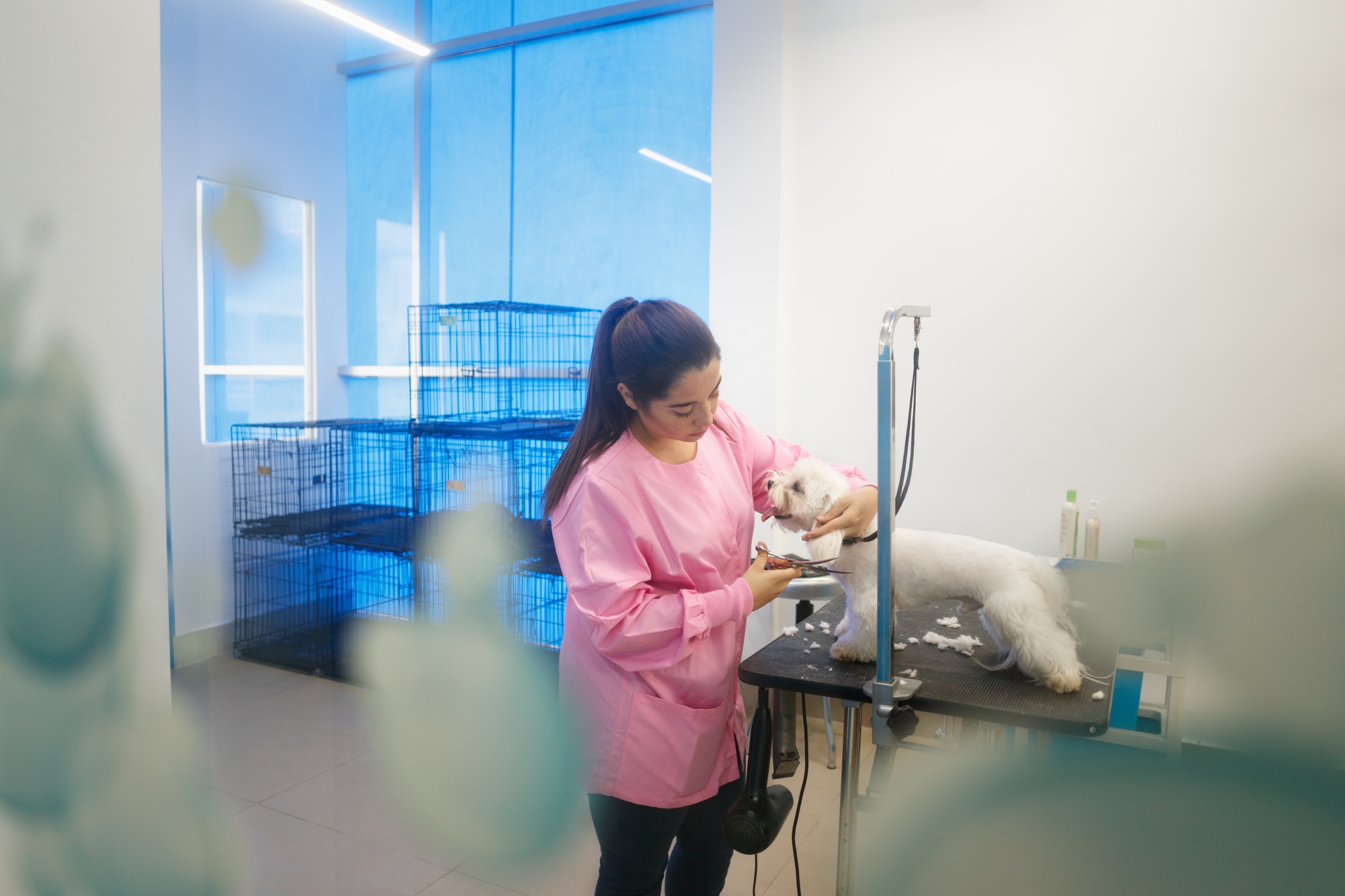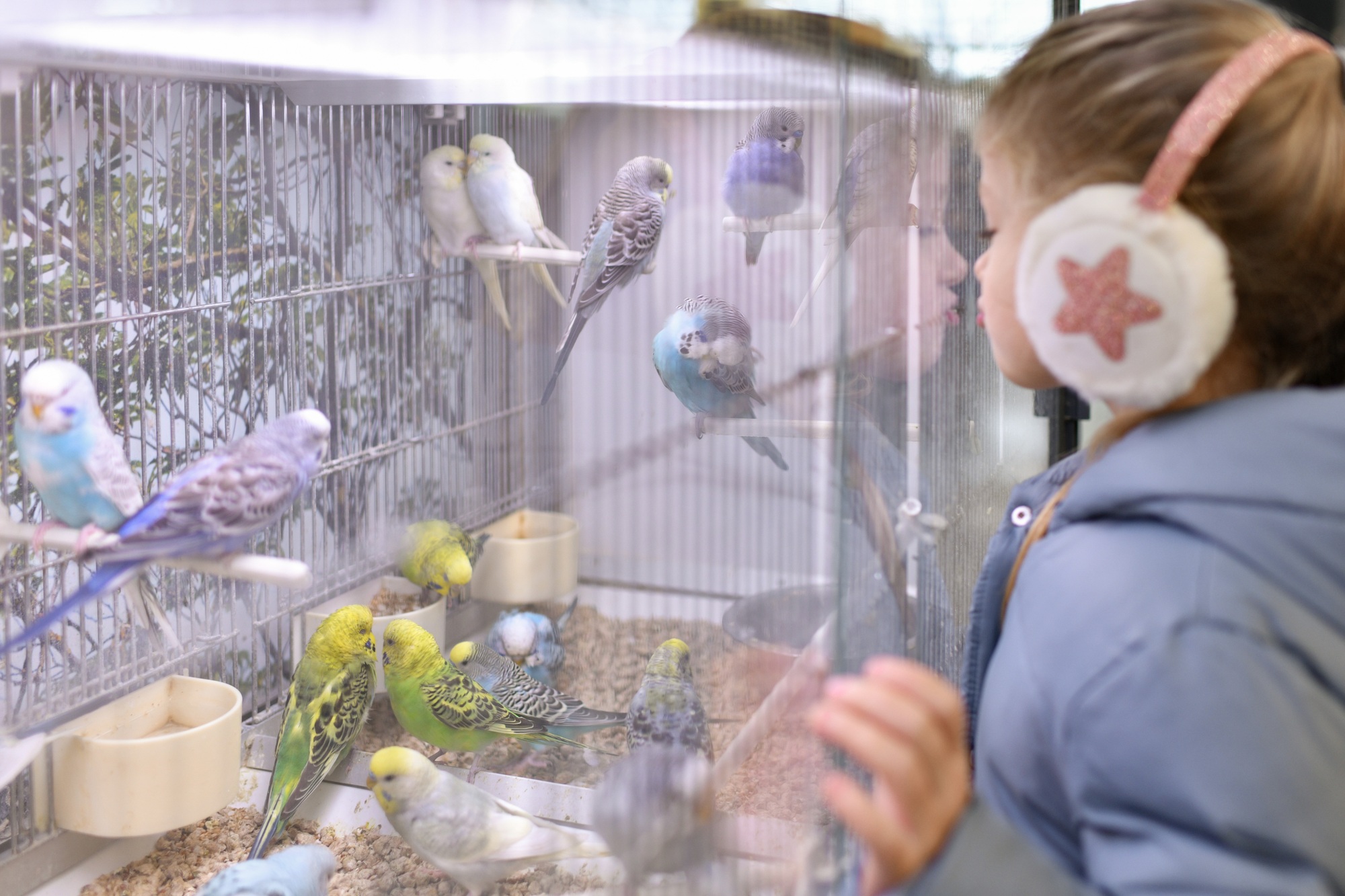Key Takeaways

- Thorough Market Research: Understand local demand, analyze competitors, and identify target customers to ensure a solid foundation for your pet store.
- Comprehensive Business Plan: Outline your goals, financials, and marketing strategies to navigate the startup process effectively.
- Strategic Location Selection: Choose a high-traffic area that is accessible to pet owners and complies with zoning regulations.
- Diverse Product Sourcing: Establish relationships with reliable suppliers and offer unique products to differentiate your store from competitors.
- Effective Marketing: Utilize social media, local events, and promotions to build brand awareness and engage with the pet owner community.
- Customer-Centric Hiring Practices: Employ knowledgeable staff passionate about animals to enhance customer service and experience within your store.
Are you dreaming of turning your love for animals into a thriving business? Opening a pet store can be a rewarding venture that not only allows you to share your passion but also meets the needs of pet owners in your community. With the pet industry booming, now’s the perfect time to dive into this exciting market.
How To Open A Pet Store

Opening a pet store requires careful planning and execution. Follow these critical steps to establish a successful small business in the pet industry.
Step 1: Conduct Market Research
- Analyze local competitors to determine the demand for pet products and services.
- Identify target markets including dog owners, cat owners, and unique pet owners.
- Survey potential customers to gather insights about their needs and preferences.
Step 2: Create a Business Plan
- Outline your business goals including product offerings and target customer base.
- Detail startup costs including inventory, lease, and equipment expenses.
- Develop a marketing strategy that addresses how you will attract and retain customers.
Step 3: Secure Financing
- Evaluate your budget and determine the total funds required for launching your pet store.
- Explore financing options such as small business loans or personal savings.
- Prepare a financial plan that includes projections for revenue and expenses.
Step 4: Choose a Location
- Select a location with high foot traffic and accessibility for pet owners.
- Consider proximity to pet-related services such as grooming or veterinary clinics.
- Ensure compliance with zoning laws and regulations in your chosen area.
Step 5: Obtain Licenses and Permits
- Research local and state regulations regarding operating a pet store.
- Apply for necessary licenses such as a business license and seller’s permit.
- Confirm any additional permits required for selling live animals if applicable.
Step 6: Source Suppliers
- Establish relationships with reputable suppliers for pet food, toys, and accessories.
- Consider offering unique products that differentiate your store from competitors.
- Evaluate wholesale prices to maximize profit margins on inventory.
Step 7: Design the Store Layout
- Create an inviting and organized store layout that allows easy navigation for customers.
- Designate specific areas for different types of products including food, toys, and grooming supplies.
- Use attractive signage to highlight promotions and special offerings.
Step 8: Hire Staff
- Employ knowledgeable staff who are passionate about animals and customer service.
- Train employees on product knowledge and effective sales techniques.
- Schedule staff to ensure adequate coverage during peak shopping times.
Step 9: Launch Marketing Strategies
- Implement a marketing plan that includes social media, local events, and promotions.
- Build a website to showcase products and allow online ordering if desired.
- Engage with the community by hosting events for pet owners.
Step 10: Open for Business
- Plan a grand opening event to create buzz and attract customers.
- Offer exclusive deals or giveaways to encourage foot traffic.
- Gather customer feedback to continually improve the shopping experience.
Following these steps positions you for success in opening a pet store as a thriving small business in the growing pet industry.
Understanding The Pet Retail Industry

Understanding the pet retail industry plays a crucial role in successfully opening a pet store. Awareness of market dynamics and consumer behavior enhances decision-making and strategic planning.
Current Market Trends
Current market trends indicate significant growth in the pet retail industry. In 2022, Americans spent $136 billion on pet-related products and services. By 2030, global projections suggest that spending will escalate to nearly $500 billion. Leading trends include increasing demand for organic and premium pet foods, as well as sustainable and eco-friendly products. Adapting to shifting consumer preferences enables your small business to capture a larger market share and fosters customer loyalty.
Types Of Pet Stores
Types of pet stores determine your niche in the market. Various models exist, including:
- Full-Line Pet Stores: Offer a comprehensive selection of pet foods, accessories, and supplies for multiple pet species.
- Specialty Pet Stores: Focus on specific pet types or categories, such as fish, reptiles, or small mammals.
- Online Pet Stores: Provide convenience through e-commerce platforms, catering to customer desires for easy ordering and delivery.
- Pet Boutiques: Emphasize high-end products, often creating a unique shopping experience for pet owners.
Choosing the right type of store aligns with your expertise and local market demand, enhancing your potential success in the pet retail field.
Creating A Business Plan

A well-structured business plan serves as a roadmap for your pet store. This plan includes essential components that guide you through the process of establishing a successful small business.
Defining Your Niche
Clearly define your niche within the pet industry. Consider factors such as pet types, product offerings, and target demographics. For example, you could specialize in organic pet foods, high-end accessories, or specific pet species like reptiles or exotic birds. Understanding your niche helps attract loyal customers who seek specialized products.
Market Research
Conduct thorough market research to gather data about your local market. Analyze demographics, behaviors, and preferences of potential customers to identify demand. For instance, you may discover that there is an increasing preference for premium pet wellness products. Identify key competitors in your area to assess their strengths and weaknesses. This research informs your marketing strategy and helps position your pet store effectively in the marketplace.
Financial Projections
Prepare detailed financial projections to estimate startup costs and potential profits. Outline expected expenses such as inventory, rent, employee salaries, utilities, and marketing efforts. For example, initial inventory costs could range from $10,000 to $30,000 depending on your chosen niche. Additionally, project your revenue based on market research, estimating sales figures over the next three to five years. These financial insights enable you to secure financing and guide operational decisions.
Legal Requirements

Understanding the legal requirements for establishing a pet store is crucial for a successful small business venture. These steps ensure compliance with local laws and regulations.
Registering Your Business
Registering your business involves several key actions. Choose a unique business name and register it with the state. Obtain necessary federal tax IDs. Depending on your location, registration may also involve local government regulations. Prioritize completing these steps to legally operate your pet store.
Obtaining Necessary Licenses
Acquiring specific licenses is essential for operating a pet store. Secure a general business license from your state. In many cases, obtaining a specialized pet shop license is also required. The application process typically requires details about the types of animals sold and a detailed floor plan of the store. These licenses ensure compliance with animal welfare standards and local laws.
Compliance With Local Regulations
Compliance with local regulations is critical for your pet store’s operations. Research zoning laws to confirm that your chosen location permits a pet store. Verify any additional regulations related to animal care and sales to ensure adherence to community standards. Staying informed about local laws enhances your business credibility and protects you from potential legal issues.
Selecting A Location

Choosing the right location for your pet store is essential for attracting customers and ensuring successful operations. Several key factors influence this decision.
Factors To Consider
Understand local demographics and pet ownership trends. Areas with a high concentration of pet owners offer a better customer base. Analyze spending habits to tailor your inventory to meet local demands. Conduct market research using tools like Google Trends or surveys to identify the types of pets prevalent in your area and evaluate the competitive landscape. The combination of these factors informs a better strategy for your small business.
Real Estate Options
Explore various real estate options that provide high visibility and accessibility. Look for locations near popular parks or residential neighborhoods to attract pet owners. Evaluate properties based on their accessibility by foot, car, or public transport. Consider the availability of convenient parking, which enhances customer convenience and influences store visits.
Lease Negotiations
Negotiate lease agreements that align with your business model. Secure favorable terms that minimize overhead costs and maximize potential returns. Understand critical lease elements such as rent increases, maintenance responsibilities, and lease duration. Prioritize flexibility clauses that allow for potential expansion or exiting the lease if necessary during your business growth.
Designing Your Store Layout

Designing your store layout involves creating an inviting and functional space that enhances customer experience. Focus on key elements such as store flow, product placement, and aesthetic considerations.
Store Flow And Customer Experience
Improve customer experience by establishing a logical flow throughout your store. Arrange sections to guide customers naturally from one area to another, ensuring high-demand items are easily accessible. Implement wide aisles to accommodate movement and allow for browsing. Consider incorporating interactive displays or areas where pets can engage with products to enhance the shopping experience.
Product Placement Strategies
Maximize product visibility and sales by implementing effective product placement strategies. Position high-margin items at eye level to attract attention. Use end caps to highlight promotions or seasonal items. Organize products by category while grouping complementary items together, such as dog toys near food or grooming supplies. Utilize clear signage to categorize sections and assist customers in finding what they need quickly.
Aesthetic Considerations
Create an aesthetically pleasing environment by maintaining a clean and organized appearance. Utilize bright lighting to enhance product visibility and create an inviting atmosphere. Incorporate vibrant colors that evoke warmth and enthusiasm, aligning with the energy of pet ownership. Use attractive displays to showcase products creatively, enhancing the overall shopping experience while encouraging impulse buying.
Sourcing Products

Sourcing products entails identifying reliable suppliers and managing inventory effectively to fulfill customer demands.
Selecting Suppliers
Select reputable suppliers to ensure high-quality products for your pet store. Focus on companies like Fetch Sourcing, which connect retailers with a wide range of pet product manufacturers and wholesalers. Ensure that products meet safety standards and start negotiations early to secure competitive pricing. Assess multiple suppliers for variety in product offerings, which can include food, toys, grooming supplies, and healthcare items. An extensive range meets diverse customer needs and attracts various pet owners.
Inventory Management
Implement robust inventory management practices to maintain optimal stock levels. Utilize software solutions to track inventory in real-time, allowing for accurate forecasting based on sales data and seasonal trends. Ensure stock rotation based on best-selling products and monitor slow-moving items to optimize space. Conduct regular audits to maintain inventory accuracy, reducing the risk of overstocking or stockouts, which benefits financial health.
Pricing Strategies
Establish competitive pricing strategies to attract customers while ensuring profitability. Research the pricing models of local competitors, adjusting your prices accordingly to remain competitive. Consider diverse pricing strategies, including cost-plus pricing, where a fixed percentage markup is added to the cost of each product. Offer discounts on bulk purchases or loyalty programs to encourage repeat business. Transparent pricing instills trust and aligns with consumer preferences, enhancing customer retention.
Marketing Your Pet Store

Effective marketing strategies propel your pet store toward success. Implement the following tactics to enhance visibility and attract customers.
Building A Brand
Create a strong brand identity that resonates with pet owners. Conduct market research to determine target demographics and preferences. Use a memorable business name and design an eye-catching logo. Develop a slogan that captures your store’s essence. Ensure consistency across all marketing materials to reinforce recognition. Establish a compelling online presence through a professional website that features your products and services.
Utilizing Social Media
Leverage social media platforms to engage potential customers and build a community. Post regularly with content that interests pet owners, such as tips for pet care, promotions, or feature stories about adoptable pets. Encourage user-generated content by hosting photo contests with prizes. Collaborate with local pet influencers to expand your reach. Utilize targeted advertisements on platforms like Facebook and Instagram to attract specific demographics within your area.
Local Advertising Strategies
Implement local advertising techniques to generate foot traffic to your store. Distribute flyers and posters in veterinary clinics, pet grooming salons, and community centers. Consider participation in local events, such as pet expos or community fairs, to interact with potential customers directly. Collaborate with nearby businesses for cross-promotional deals. Invest in local newspaper or magazine advertisements to ensure your store remains top-of-mind for prospective buyers.
Hiring Staff
Hiring staff for your pet store involves careful planning and attention to detail. By following a structured approach, you create a strong foundation for service excellence.
Defining Job Roles
Define specific job roles to ensure alignment with store operations. Consider roles such as:
- Sales Associates: Assist customers, manage sales processes, and maintain product displays.
- Customer Service Representatives: Address customer inquiries and resolve issues effectively.
- Animal Care Specialists: Ensure the health and well-being of animals available for sale.
- Management Positions: Oversee daily operations, staff management, and financial objectives.
Identifying these roles helps streamline hiring to meet your store’s needs.
Training Employees
Implement comprehensive training programs to equip employees with essential knowledge. Focus on:
- Animal Care Procedures: Educate staff on proper handling and caring for animals.
- Product Knowledge: Familiarize employees with pet supplies and services available.
- Customer Service Skills: Train employees in effective communication and problem-solving strategies.
Regular training sessions enhance employee confidence and improve customer interactions.
Building A Customer-Centric Team
Create a customer-centric team by recruiting passionate employees. Prioritize candidates with experience in pet care or retail environments. Provide competitive benefits to attract top talent. Foster a pet-friendly work culture to enhance employee satisfaction. Engaged employees contribute positively to customer experiences, driving business success in your small business.
Opening Day Preparation
Preparing for the opening day of your pet store involves several essential steps to ensure a smooth launch.
Store Setup Checklist
- Signage Installation: Ensure eye-catching signs are placed outside your store for visibility.
- Product Arrangement: Organize products by category like food, toys, and supplies for easy access.
- Inventory Stocking: Stock shelves with products from reliable suppliers, ensuring adequate variety.
- Checkout Setup: Install a point of sale system that streamlines transactions and inventory management.
- Safety Measures: Confirm safety protocols like fire exits are clearly marked and first aid kits are accessible.
Final Inspections
- Cleanliness Check: Conduct a thorough cleaning of the store, addressing all areas customers will frequent.
- Equipment Functionality: Test all equipment such as refrigeration units and registers to confirm they operate correctly.
- Layout Evaluation: Walk through the space to ensure the flow is intuitive, with high-demand items easily reachable.
- Compliance Verification: Review that all licenses and permits are displayed as required by local regulations.
Promotional Strategies For Opening Day
- Grand Opening Event: Host an event with free samples, pet adoptions, or giveaways to attract local customers.
- Social Media Campaign: Launch a targeted campaign on platforms like Instagram and Facebook to engage potential customers.
- Partnerships: Collaborate with local vets or pet service providers for cross-promotional opportunities.
- Exclusive Discounts: Offer limited-time discounts on popular products to encourage purchases and create excitement.
- Loyalty Program: Introduce a loyalty program to encourage repeat business and build long-term relationships with customers.
Troubleshooting
Navigating challenges during the establishment of a pet store requires understanding common issues and effective solutions.
Common Issues When Starting A Pet Store
- Inventory Overload: Managing excess stock can strain finances.
- Regulatory Compliance: Failing to meet local laws may lead to fines.
- Location Challenges: Selecting an unpopular area can result in low foot traffic.
- Marketing Inefficiencies: Ineffective advertising strategies can reduce customer engagement.
- Staff Turnover: High employee turnover disrupts operations and adds hiring costs.
Solutions To Overcome Challenges
- Inventory Management: Implement robust inventory systems to track sales and adjust orders based on demand.
- Legal Guidance: Consult with legal experts to ensure compliance with licensing and zoning regulations from day one.
- Location Analysis: Use demographic studies and foot traffic data to select a high-visibility location near pet-friendly areas.
- Targeted Marketing: Develop focused marketing campaigns that resonate with local pet owners through social media and community events.
- Employee Retention: Foster a positive work environment with training programs and competitive benefits to reduce turnover and enhance service quality.
Conclusion
Opening a pet store can be an exciting venture that allows you to turn your passion for animals into a profitable business. By following the steps outlined in this guide and staying informed about industry trends, you’ll be well-equipped to navigate the challenges of the pet retail market.
Your commitment to understanding customer needs and providing exceptional service will set you apart from the competition. Remember to remain adaptable and open to feedback as you grow your business. With the right approach and dedication, your pet store can become a beloved destination for pet owners in your community. Embrace the journey ahead and enjoy every moment of building your dream.
Frequently Asked Questions
What are the benefits of opening a pet store?
Opening a pet store allows animal lovers to share their passion while meeting the needs of local pet owners. With the growth of the pet industry, it’s a rewarding business opportunity that can be both fulfilling and profitable.
How do I conduct market research for a pet store?
To conduct market research, analyze local demographics, understand consumer preferences, and investigate competitors. Surveys, focus groups, and online research can provide valuable insights into the local pet market and its trends.
What should be included in a business plan?
A business plan should outline your business goals, target market, financial projections, marketing strategy, and operational plan. It serves as a roadmap for your pet store and helps secure financing and guide your decisions.
How do I choose a location for my pet store?
Select a location based on local demographics, pet ownership trends, and visibility. Consider foot traffic, accessibility, and competition in the area. A strategic location can significantly impact your store’s success.
What licenses do I need to open a pet store?
Licenses vary by location, but common requirements include a business license, sales tax permit, and health permits for selling pet food. Research local regulations to ensure compliance before opening your store.
How can I market my pet store effectively?
Effective marketing strategies include social media promotion, local advertising, hosting events, and offering loyalty programs. Building a strong brand identity and engaging with the community can attract and retain customers.
What challenges might I face when starting a pet store?
Common challenges include inventory management, regulatory compliance, and marketing inefficiencies. Preparing to address these challenges with robust systems and strategies can help ensure a smoother startup process.
How can I train my staff for my pet store?
Provide comprehensive training programs that cover product knowledge, customer service skills, and company policies. Continuous training and fostering a positive work environment can enhance employee performance and retention.
What types of pet stores can I open?
Different types of pet stores include specialty shops focused on specific animals, pet supply retailers offering a wide range of products, and eco-friendly stores emphasizing sustainable products. Choose a type that aligns with your expertise and local demand.
What trends are shaping the pet industry?
Key trends in the pet industry include increasing demand for organic and premium pet foods, personalized pet products, and sustainable practices. Staying aware of these trends can help you meet customer expectations and boost sales.
Image Via Envato: DragonImages, Wdnld, o1559kip, monkeybusiness, diego_cervo, traimakivan, NomadSoul1, Elisall, shakures



